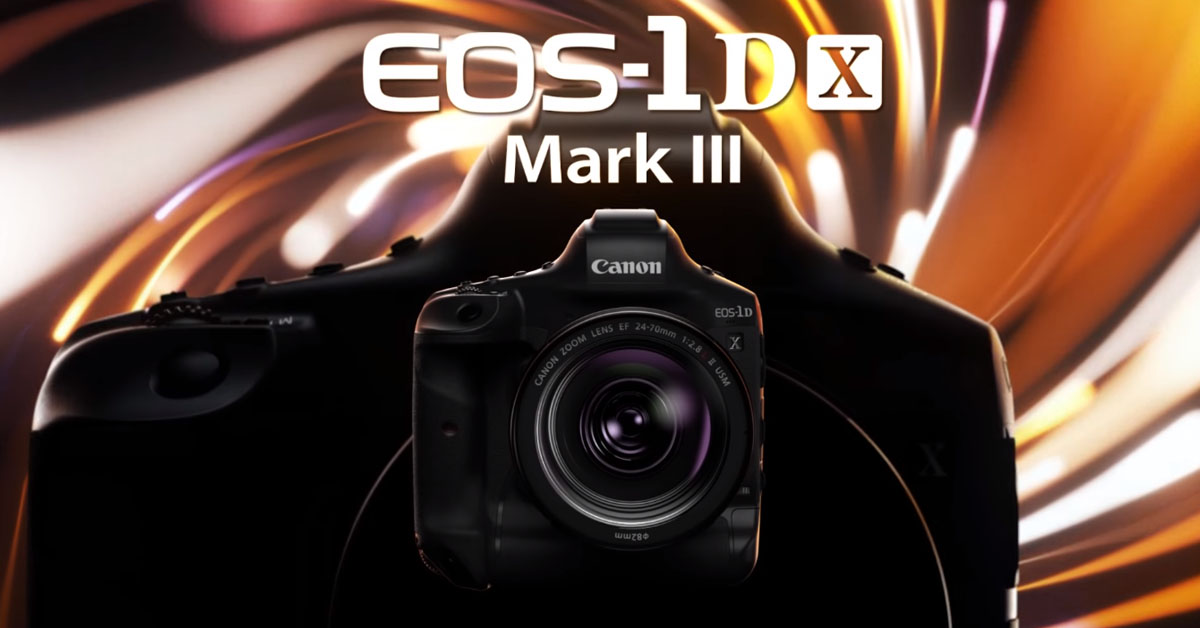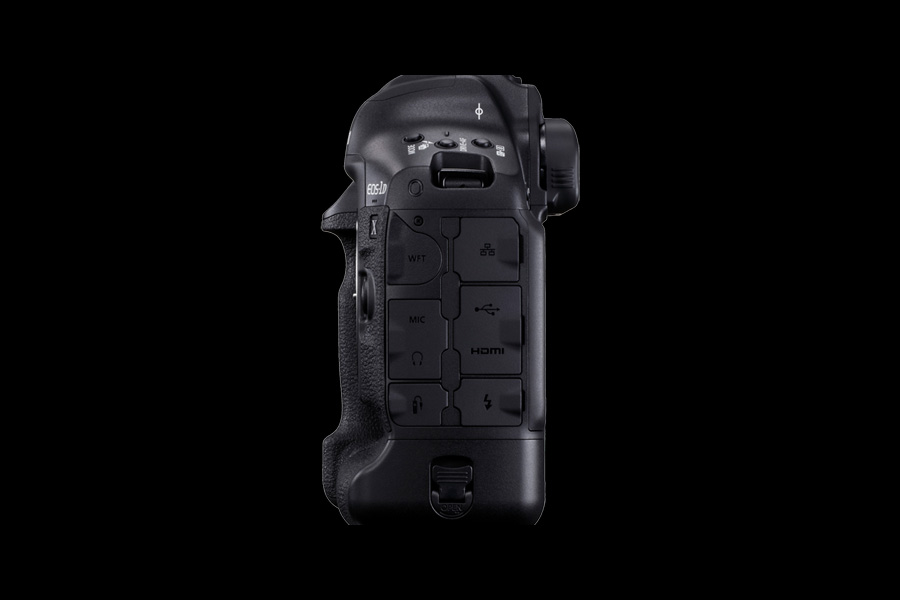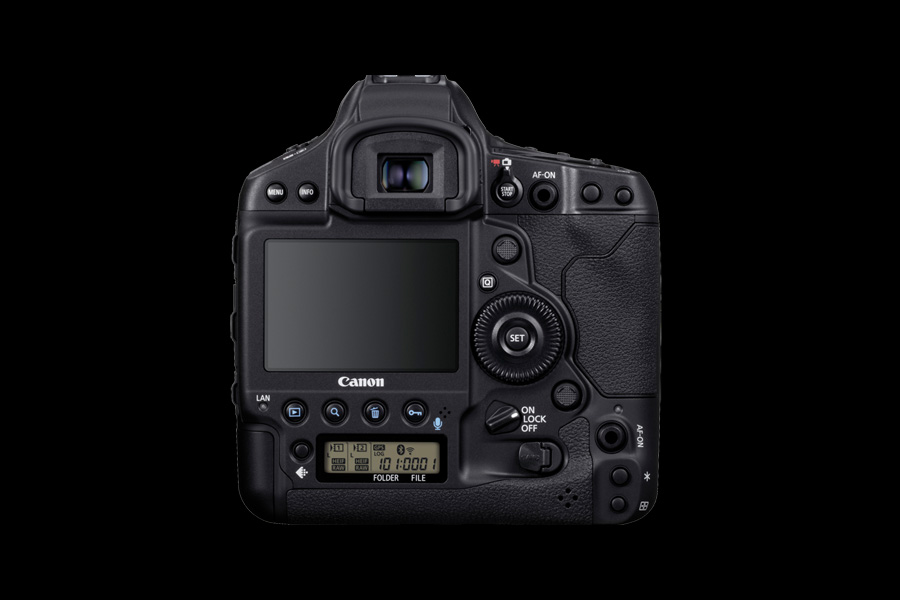
Another camera manufacturer updating its DSLR lineup this year is Canon, with its new EOS-1D X Mark III. Four years seems to be the time period between the next iterations of the EOS-1D X Mark lineup as the first one was launched in 2012, followed by Mark II in 2016. The Mark III announced at CES 2020, is a professional grade flagship DSLR camera, which brings a whole lot of improvements from sensor, autofocus, videography and more.
Canon EOS-1D X Mark III Overview
The EOS-1D X cameras have always been intended for sports, journalism, wildlife, wedding photography, and other fast-paced scenarios. The Mark III builds up to the legacy with its new and improved sensors. Here, you’ll be getting a new 20.1-megapixel full-frame (FX) CMOS sensor with the ability to capture up to 20 frames per second in “Live View” mode (in both RAW and RAW+ JPEG formats) using either mechanical or an electronic shutter. On the Mark III’s optical viewfinder, the continuous shooting rate goes to 16 frames per second. The shutter speed ranges from 1/8000th of a second to 30 seconds.
Both these continuous shooting modes come along with continuous AutoFocus (AF), AutoExposure (AE) and 1000+ shot image buffer. Moreover, on the optical viewfinder, you get 191 AF points (with 155 cross-type) and 3,869 manually selectable AF points (with 525 automatic areas) in live view shooting. For subject tracking, you get face detection, eye detection, and Canon’s own head detection AF.
What’s improved?
Though the 20.1 sensor on the Mark III sounds similar to the 20.2-megapixel sensor on the Mark II, it has a Gaussian Low Pass Filter (LPF) which reduces the “moiré effect” for sharper and detailed images. Furthermore, according to the company, the new Digic X image processor provides up to 3 times faster image processing and 380x better Dual CMOS AF performance than the Digic 6+ on the Mark II.
Also read: Canon cameras price in Nepal [Updated]
Aside from faster performance, Digic X also improves battery life by almost twice. It also enables lower noise levels at all ISO sensitivities for sharper images. Talking about ISO, the EOS-1D X Mark III’s native range of 100 to 102,400 can be further expanded up to 819,200 for incredible low-light photography.
Canon has also improved autofocus with this DSLR camera as it comes with a dedicated CMOS imaging sensor exclusively for that purpose. In Live View mode, the Dual Pixel CMOS AF system facilitates autofocusing by turning virtually every pixel on the camera’s sensor into an imaging pixel and a phase-detection AF (PDAF) pixel.

Videography
Getting into videography prowess of the Mark III, the impressive performance continues on. It can shoot full-frame 4K videos at up to 60 frames per second, in which the camera will record the footage internally using the 10-bit HEVC/H.265 coded with Canon Log or 12-bit Raw. Such footages have intentionally low contrast and up to 12 stops of dynamic range, which the professional film-makers can benefit from.
The EOS-1D X Mark III can also record 5.5K (5472 x 2886 pixels) RAW video footage internally to its CFexpress cards. This file can be processed using the Digital Photo Pro software. Moreover, you can also shoot Full HD videos with DPAF.
Others
Now, let’s get into other assorted features of the Canon EOS-1D X Mark III DSLR camera. On the back, there’s the 3.2-inches TFT touchscreen with 2.1 million dots with 100% coverage and a viewing angle of 170º with illuminating buttons. It also has two slots for CFexpress 1.0 Type B memory card. The Mark III is also dust and water-resistant and is tough thanks to the magnesium-alloy exterior. It has built-in WiFi, an RJ-45 connection, and a port for Canon’s WFT-E9 wireless file transmitter. On to the battery, it is rated 2,850 shots per charge which is more than double from Mark II’s 1,210 shots.
Canon EOS-1D X Mark III Specifications
- Camera Weight: 1,250 grams (camera body only)
- Dimensions: 6.22W x 6.60H x 3.25D-inches
- Image Sensor: 36 x 24mm, 20.1MP CMOS, Full Frame (FX) format
- Screen: 3.2-inch touch-sensitive TFT LCD panel with 170º viewing angle; 2.1 million dots; anti-reflection
- Viewfinder: Eye-level Pentaprism Viewfinder with approx. 100% coverage
- AF System: 191 Autofocus points (including 155 f/4 cross-type sensors; with 1 dual cross-type at f/2.8); -4 to +21EV
- ISO Range: 100 – 102,400 (also up to 819,200)
- Shutter Speed: 1/8000 – 30 seconds
- Continuous Shoot: 16 frames/sec (up to 20fps in Live View mode)
- Video Resolution: 3840×2160 Pixels (4K UHD), 1920×1080 (Full HD)
- Video Frame Rate: 4K UHD (60/50/30/25/24fps), Full HD (60/50/30/25/24fps), MOV Full HD video at 100fps (recorded as 1/4-speed slow-motion movie)
- Built-in flash: Yes
- Environmental Sealing: Yes
- Lens Mount: EF (excludes EF-S/EF-M lenses)
- Connectivity: HDMI (mini), External mic, headphone jack, RJ-45, Flash PC connector, 20Gbps USB 3.1 Gen 2, WiFi 5 (2.4GHz), Bluetooth, GPS
- Battery Type: Li-ion, rechargeable; Model: LP-E19
- Battery Life (Approx.): 2,850 shots
- Companion App: Canon Camera Connect (available on both Android and iOS)
Price and Availability
The Canon EOS-1D X Mark III will cost a whopping $6,499 (~NRs. 739,100) but that is to be expected as this is a flagship-grade DSLR camera. It will be available in mid-February of 2020. Similarly, the EOS-1D X Mark III is also going to be shortly available in Nepal. We expect it to be priced at around Rs. 8 lakhs or more.


























![Best Mobile Phones Under Rs. 15,000 in Nepal [Updated] Best Phones Under 15000 in Nepal 2024 Budget Smartphones Cheap Affordable](https://cdn.gadgetbytenepal.com/wp-content/uploads/2024/03/Best-Phones-Under-15000-in-Nepal-2024.jpg)
![Best Mobile Phones Under Rs. 20,000 in Nepal [Updated] Best Mobile Phones Under NPR 20000 in Nepal 2023 Updated Samsung Xiaomi Redmi POCO Realme Narzo Benco](https://cdn.gadgetbytenepal.com/wp-content/uploads/2024/01/Best-Phones-Under-20000-in-Nepal-2024.jpg)
![Best Mobile Phones Under Rs. 30,000 in Nepal [Updated]](https://cdn.gadgetbytenepal.com/wp-content/uploads/2023/12/Best-Phones-Under-30000-in-Nepal-2024.jpg)
![Best Mobile Phones Under Rs. 40,000 in Nepal [Updated] Best Phones Under 40000 in Nepal 2024 Smartphones Mobile Midrange](https://cdn.gadgetbytenepal.com/wp-content/uploads/2024/02/Best-Phones-Under-40000-in-Nepal-2024.jpg)
![Best Mobile Phones Under Rs. 50,000 in Nepal [Updated] Best Phones Under 50000 in Nepal 2024 Smartphones Midrange](https://cdn.gadgetbytenepal.com/wp-content/uploads/2024/02/Best-Phones-Under-50000-in-Nepal-2024.jpg)
![Best Flagship Smartphones To Buy In Nepal [Updated] Best Smartphones in Nepal 2024 Flagship Premium Samsung Apple iPhone Xiaomi OnePlus Honor](https://cdn.gadgetbytenepal.com/wp-content/uploads/2023/09/Best-Smartphones-in-Nepal-2024.jpg)